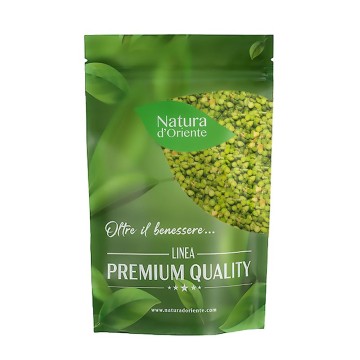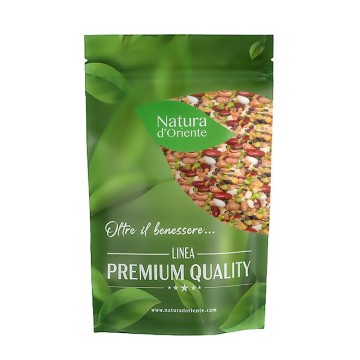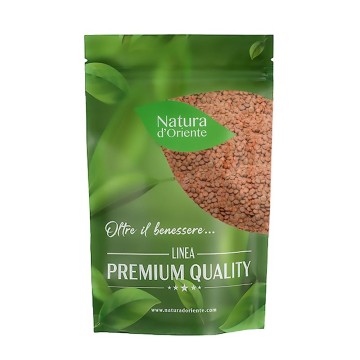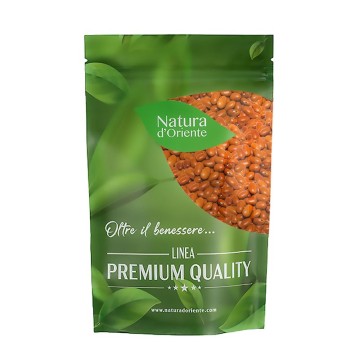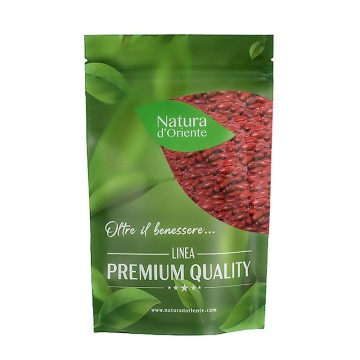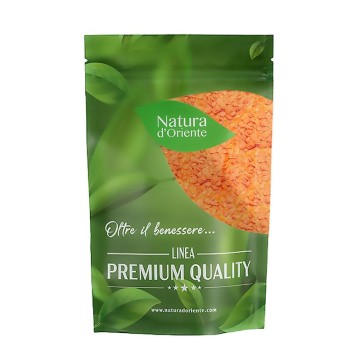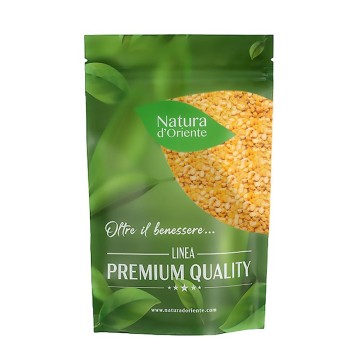Small and dark, these black lentils are known as Beluga lentils, because they are named after the caviar they look like. Outwardly, in fact, they look like small dark and shiny grains. They are cheap, easy to cook, delicious but also rich in proteins and nutrients that are beneficial to our health.
Black Beluga lentils: properties and benefits
Black lentils are a good source of protein, polyphenols, iron and fiber, among other nutritional benefits . That's why they stand as an essential ingredient in our pantry.
They are among the most nutritious types of lentils, as their composition is more or less the same, but Belugas contain beneficial substances in greater quantities.
Black lentils have a composition rich in vitamins A and C, group B and folic acid ; they make bio-available antioxidants such as anthocyanins and isoflavones. In addition, they have good amounts of mineral salts such as phosphorus, zinc, calcium, potassium, iron and magnesium.
Thanks to its rich composition, therefore, Beluga lentil has many useful properties. First of all, it is an excellent source of vegetable protein for the body, which is especially important for those following a vegetarian and vegan diet to replace amino acids of animal origin.
The antioxidants present in the black pigment (which determines the color of the beans) make them an anti-aging food: they fight free radicals, which cause damage to the cells.
The free radicals so harmful to our well-being are formed in particular during inflammation, or in the consumption of smoke, alcohol, and in exposure to toxic substances and pollution. < / p>
Consuming legumes, and in particular fiber-rich Beluga lentils , promotes the well-being of the cardiovascular system. The soluble and insoluble fibers in our body reduce cholesterol and blood pressure, and help lower blood sugar levels.
Above all, the fibers contained in legumes improve digestion, helping to prevent constipation and other digestive disorders. For the purpose of proper nutrition, the nutrients of lentils help regulate metabolism and with the sense of satiety, they will help lose weight for those who follow a slimming diet. In addition, these black lentils are naturally gluten-free and low in sodium.
Lentils are a good source of iron, essential in the production of blood and for transporting oxygen in the body, giving energy.
The presence of iron, proteins and mineral salts in black lentils helps in case of prolonged stress and frequent fatigue.
Origins and History of cultivation
From archaeological evidence, lentils could be the oldest cultivated legume in history. Some archaeological excavations have shown the presence of lentils as early as 7,000 BC. in southwestern Asia, then in Turkey, and in the Egyptian tombs. Lentils soon spread to the Mediterranean world, and are also mentioned in the Bible.
The name lentil derives from the Latin word used for the leguminous plant, the Lens, while the Beluga variety as aforementioned, derives its name from the glistening caviar they resemble.
The black lentil, in fact, is a variety of the many types of lentils (red, brown, black, etc.). Beluga lentil, among the black lentils, is probably native to Asia.
Lentils have enjoyed popularity for thousands of years and black Beluga lentils have always been considered a delicious and special addition to the table.
Like many other types of lentils, these black lentils are also an important source of food for millions of people around the world, particularly in the Asian and Indian continents. In India they are highly appreciated for their sweet taste and aroma, and are named Urad Dhal.
Today the cultivation of black lentils is very widespread in India and Canada - this is where the types of Beluga black lentils that we offer come from.
Plant and Fruit
The lentil plant (Lens culinaris or Lens esculenta) is the one that gives us the small edible legume. It is a plant with annual growth, about 40-50 cm tall, whose seeds grow in pods, which usually carry two seeds in each.
The Lens genus is part of the Faboideae subfamily and the Fabales plant family - legume or bean plants.
The Lens is an underground plant, because the seed cotyledons remain in the soil. For this reason, the plant is less vulnerable to cold, wind erosion and insect attack.
The flowers are small, white, pink, purple or pale blue. The pods are about 1.5 cm long, slightly swollen as each contains two seeds, about 0.5 cm in diameter. The typical small lens shape of the seeds,
The different varieties of lentils grown are different from each other in size, color of leaves, flowers and seeds. Among the black ones, Beluga lentils are grown mainly in the cool, dry climates of Canada and the plains of northern America.
Nutritional values of black lentils
These legumes are packed with nutrients that are beneficial to health. In 100 grams of Black Beluga Lentils, we find a calorie intake of 301 kcal, zero fat, lots of proteins (about 26%), few carbohydrates and abundant fiber (about 30%).
Among the mineral salts are present in red lentils, moderate levels of calcium (about 55 mg / 100 g), iron (about 8 mg), traces of potassium and magnesium.
By consuming 100 grams of black Beluga lentils, you assimilate: vitamin C (about 5 mg) and good doses of folate - vitamin B9.
How to consume black Beluga lentils in the kitchen
Black lentils have a unique taste and texture, with soft skins, and the ability to stay whole in cooking . Qualities that make them versatile in the kitchen.
The cooking time is about 20-30 minutes, because this Beluga variety before cooking, does not need to be soaked . Lentils should only be rinsed thoroughly.
They have an earthy flavor, and an aroma reminiscent of walnut. They are delicious in salads (they stay whole when cooked), but also to create veggie burgers, side dishes, soups and stews.
Their texture makes them excellent for dishes with vegetables and spices. Alternatively, they can be used for spreads or to make a puree suitable for dips and to thicken hot dishes.
Recipe with black Beluga lentils: Lentil salad with rice
Ingredients : ½ cup of red rice - ¼ cup of Beluga lentils to cook - 1 crushed clove of garlic - 1 teaspoon of ground paprika - ½ teaspoon ground cumin - ¼ teaspoon ground coriander - about 55 ml olive oil - 1 tablespoon lemon juice - 1 large diced tomato - 1 sliced shallot - a pinch of cayenne pepper - salt qb
Preparation : Cook the rice and lentils separately, according to the instructions on the package. Put the spices and herbs in a small bowl, add the olive oil and lemon juice. Keep aside.
Once the lentils and rice are cooked and well drained, combine them together in another large bowl, and then pour in the contents of spices and herbs. Allow to cool, then add the diced tomatoes and chopped shallot, mixing all the ingredients. Add salt and pepper to taste.
You can enjoy it fresh, as a salad, by keeping it in an airtight container in the refrigerator, even for 2-3 days.
Black Beluga lentils: side effects and contraindications
For most people, lentils are a valuable ally in the diet. Like other legumes, however, they contain natural compounds which, in some predisposed subjects, can cause allergies.
Furthermore, if consumed in excessive quantities, lentils can cause flatulence, ie the presence of intestinal gas, or other intestinal disorders.
Lentil dishes should be eaten in moderation, for people with a tendency to swell, with pathologies of the gastrointestinal tract, gout, gallbladder and biliary tract.



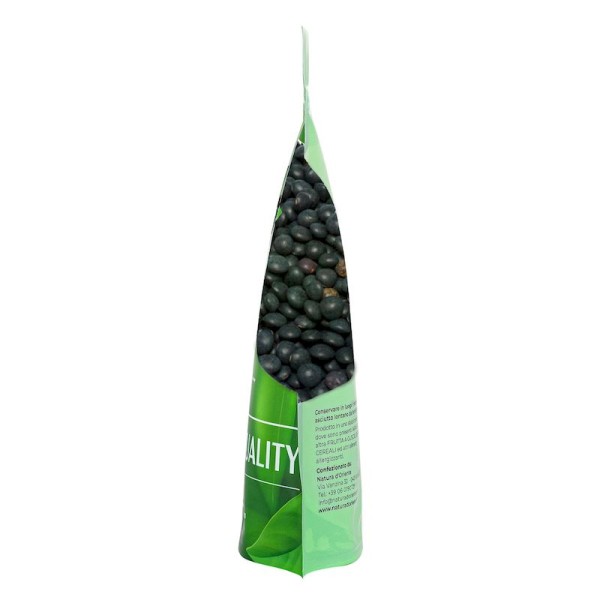





 No reward points for this product.
No reward points for this product.
